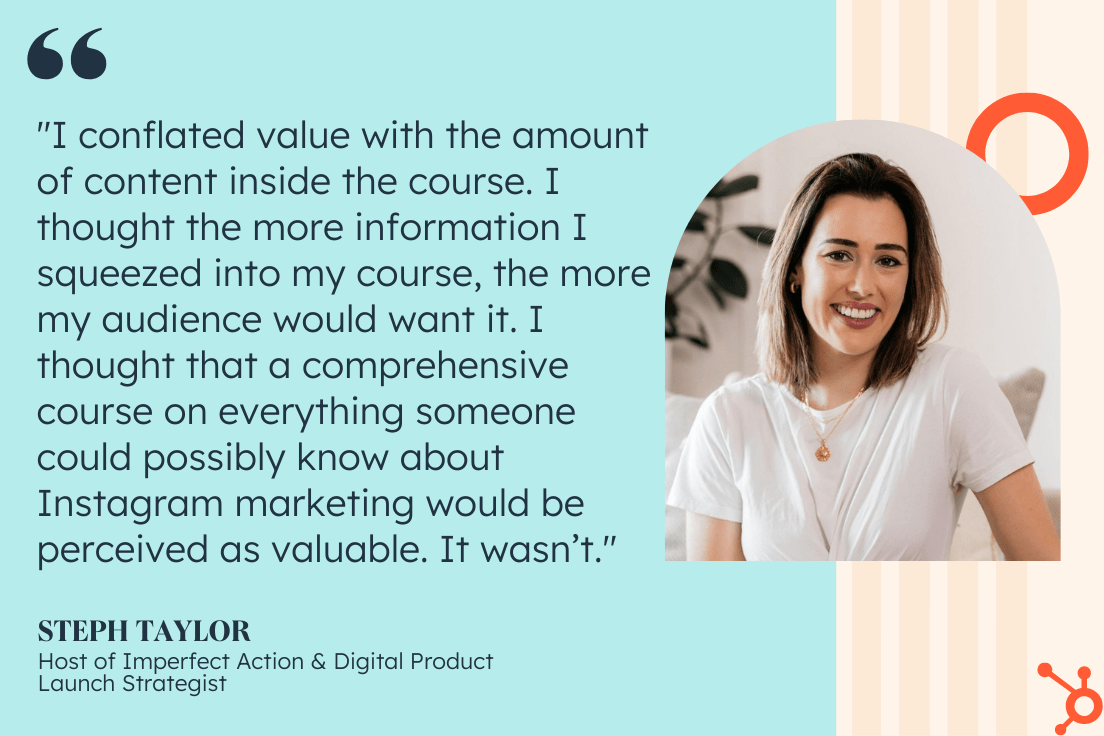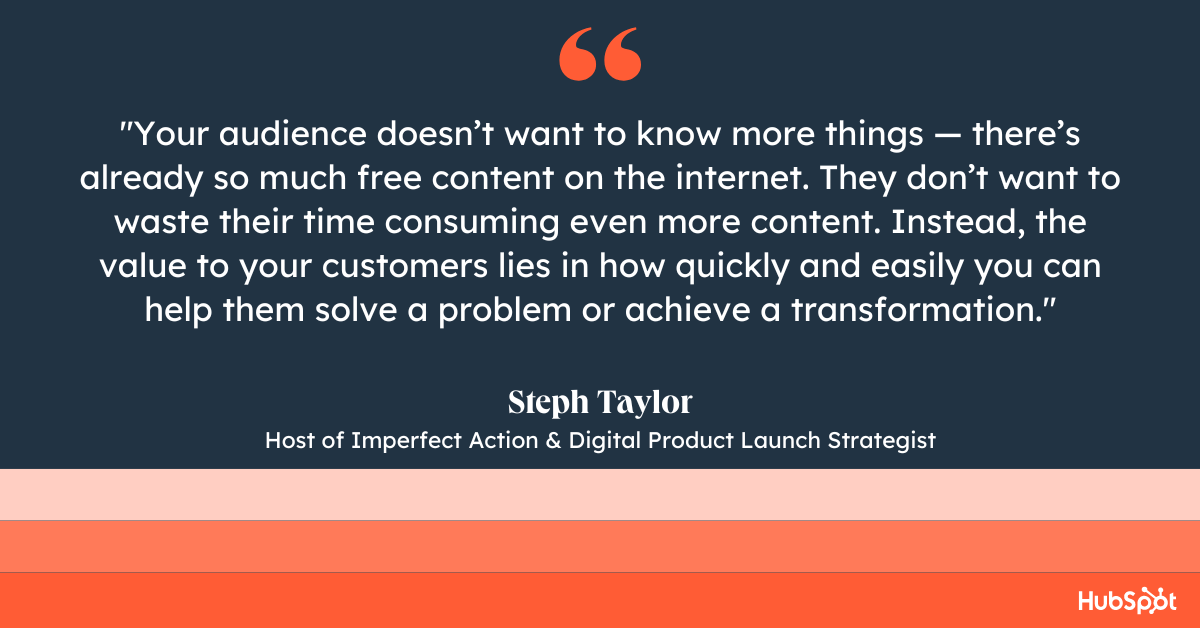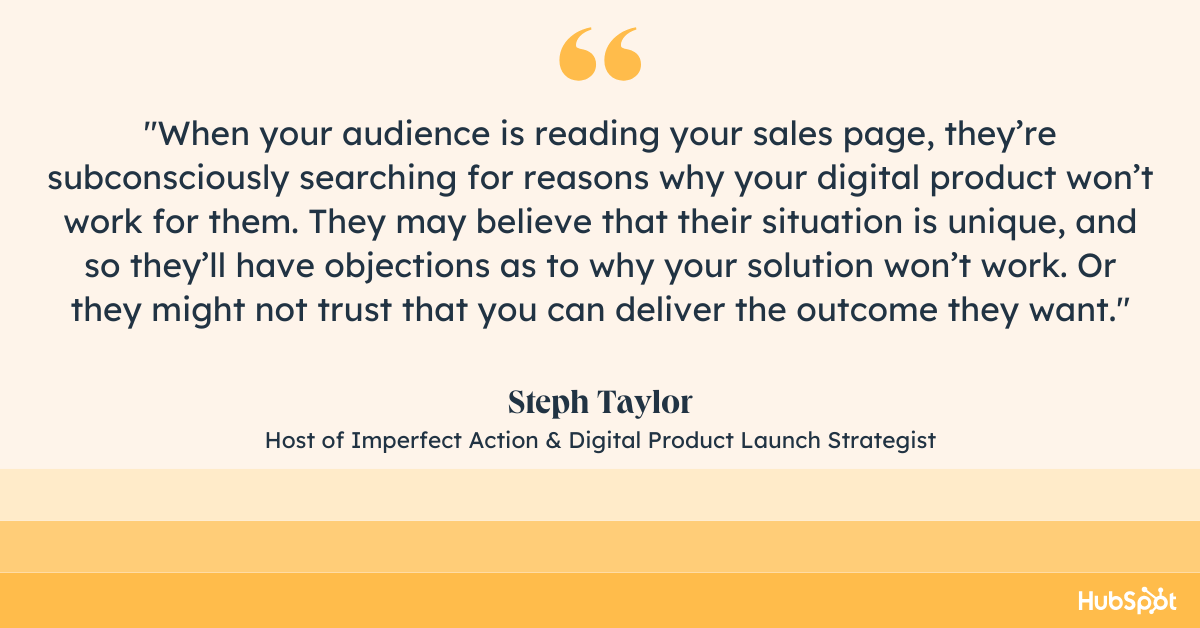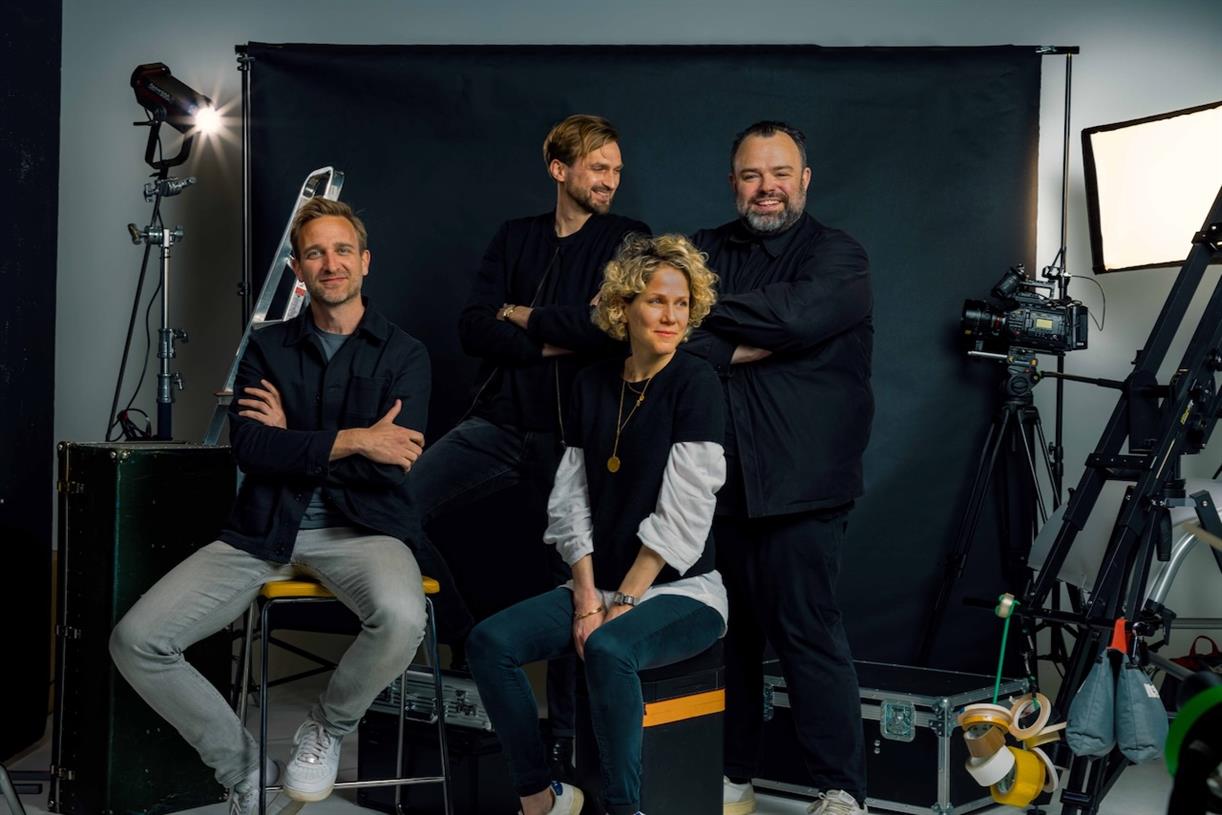Why Your Digital Product Isn't Selling — and How to Fix That [Expert Insights]
You’ve created a digital product, put it up on your website and announced it to your audience. But despite the hard work you poured into bringing your online course, ebook, or other digital product to life, it’s not selling.
![Why Your Digital Product Isn't Selling — and How to Fix That [Expert Insights]](https://blog.hubspot.com/hubfs/steph%20taylor%20insights%20into%20digital%20products.png#keepProtocol)
You’ve created a digital product, put it up on your website and announced it to your audience. But despite the hard work you poured into bringing your online course, ebook, or other digital product to life, it’s not selling. When you’re in this situation, it’s tempting to give up. To throw your arms in the air and declare, "nobody wants my product — it was all a waste of time." That’s the easier option. But you created your digital product for a reason. Perhaps you wanted to add a new income stream to your business so you could stop trading time for money. Or maybe you wanted to create a new way for people to work with you at a more affordable price point than your services. As the host of Imperfect Action podcast, which is part of the Hubspot Podcast Network, I regularly have listeners write in, asking me why I think nobody is buying their digital product. And in my work as a digital product launch strategist, I’ve helped dozens of clients turn around products that weren’t selling. Most of the time, they’ve been just a few tweaks away from a highly profitable product. I’ve also been in this sticky situation a few times myself. I’ve had some huge digital product wins — selling $20,000 worth of a $20 Canva template, over $1 million worth of a $197 guide, and $400,000 worth of a $2,000 course. But before each of these success stories came many mistakes and lessons. Using the same strategies I’m sharing in this article, I’ve rescued my own products that weren’t selling and turned them around. Whether you’ve created a low-ticket digital product or one in the thousands of dollars, these are the most common reasons why it isn’t selling — and how to fix that. Five years ago, I built a digital product that flopped. My audience kept asking me questions about marketing their businesses on Instagram, so I created an online course about Instagram marketing. Desperate to make it the most valuable course possible, I stuffed it full of content and information. I knew it was valuable, but hardly anyone bought it. That’s because I conflated value with the amount of content inside the course. I thought the more information I squeezed into my course, the more my audience would want it. I thought that a comprehensive course on everything someone could possibly know about Instagram marketing would be perceived as valuable. It wasn’t. If you know your product is bursting with value, but you keep hearing “I can’t afford it,” or “I don’t need it,” chances are your audience doesn’t see the same value you do. Usually, that’s because your audience doesn’t want to know more things — there’s already so much free content on the internet. They don’t want to waste their time consuming even more content. Instead, the value to your customers lies in how quickly and easily you can help them solve a problem or achieve a transformation. If you’re struggling to show the value in your digital product, the below podcast episodes will help: As a podcaster, I kept getting asked, “Steph, how do I launch a podcast?”. After walking several friends through the process, I decided to turn it into a digital product. I thought a group program format would work best as I could help several students at the same time. But when I launched it to my email list, only two people signed up. Confused, I surveyed my audience to find out why they didn’t buy. The answers were clear: They didn’t want to launch a podcast in a group program format. They couldn’t commit to attending live calls. They wanted to launch their show in fewer than eight weeks, or they wanted to work through it in their own time, over the next six months. If your product isn’t selling, it could be that your assumptions about what your customers want were wrong. The good news is that once you find out where you went wrong, a few tweaks to your product can lead to loads of sales. I took my audience’s feedback on board, turned the group program outline into a self-paced guide, and launched it again. A year later, that product has sold more than 3,800 copies. When your audience is reading your sales page, they’re subconsciously searching for reasons why your digital product won’t work for them. They may believe that their situation is unique, and so they’ll have objections as to why your solution won’t work. Or they might not trust that you can deliver the outcome they want. Getting your audience to know you, like you, and trust you enough to buy from you can take a while. Content marketing is the key to this. I’ve had strangers come up to me and tell me they feel like I’m their friend, because they’ve listened to my podcast so much. And sharing social proof (like testimonials and case studies) helps to build trust and overcome objections about why it won’t work for them. One of my online courses was consistently getting fewer sales than any of my other products, and I couldn’t figure out why. When I surveyed my email list, I was shocked. More than 75% of my subscribers didn’t even know the course existed. No wonder they weren’t buying it! “Build it and they will come,” doesn’t apply to digital products. You could have the most valuable course with perfect messaging and powerful social proof, and still not hit your sales goals because you’re simply not getting it in front of enough people. It might be because you don’t have enough people in your audience yet, or it might be that you’re not promoting it enough online. A human tendency is to procrastinate things that evoke negative emotions. Buying your digital product likely brings up negative feelings in your potential customers, too. Spending money on something — no matter how much they want it — might feel painful, and so they’ll delay the pain for as long as possible. Aside from the pain of spending money, your digital product likely evokes other negative feelings. A workout guide requires them to set their alarm a whole hour earlier and get up while it’s still dark outside. My guide for starting a podcast might bring up a customer’s fear of being judged. So someone will put off buying it until the reasons to act right now outweigh the reasons not to. I’m a big proponent of the live launch model as a way to encourage your prospects to buy now, rather than put it off. These are some podcast episodes to help you better understand how that could work for you: By creating your digital product and putting it out into the world, you’ve already conquered the hard part. Now you begin the fun part: Understanding why it’s not selling, making changes, and measuring the impact of those changes. You might need to work through more than one of the above strategies before you see measurable results. Think of it as an experiment where each tweak you make brings you one step closer to the winning formula. 
5 Reasons Your Digital Product Isn't Selling [+ Solutions]
Reason #1: Your audience doesn’t see the value in your product.

How to fix it:
Identify the outcome of your digital product — that is, the problem your customers will solve, or the transformation they will achieve.
Tweak your marketing and messaging so it positions your product as the vehicle to achieve this outcome, rather than being a “comprehensive” guide.
Reason #2: It’s not the right offer for your audience.
How to fix it:
Send your audience a non-buyer survey to find out why they aren’t buying your digital product. You’ll be amazed at what you learn from the question, “Why didn’t you buy?”
If several people give you similar feedback, it’s a sign that you need to either tweak your product, or change the way you’ve positioned it.

Reason #3: They don’t trust that it’ll work for them.
How to fix it:
Collect and share social proof from your customers and clients. Ensure that it’s not just about the outcome they achieved, but also tells the story of where they were before they bought your digital product.
Think of all the reasons a potential buyer would think that it won’t work for them. Show them why it will work for them with real-life examples on your sales page. Listen to episode 529 of Imperfect Action to learn how to write a million dollar sales page.
Start regularly sharing content online. It doesn’t matter whether you start a podcast or a TikTok account, as long as you’re showing up consistently in one place. In episode 559 of Imperfect Action, I coach a student through the process of identifying what content topics will be most effective for her digital product launch.

Reason #4: They don’t know about it.
How to fix it:
Review your website analytics. How many people are visiting your digital product sales page?
Commit to promoting your product more, and get creative with it. Could you interview past customers about their experience? Could you give your audience 24 hours to test drive the first module?
Reason #5: There’s no reason why they should buy it right now.
How to fix it:
If your product is available to buy at any time, consider whether the “doors open” and “doors closed” model could work for your business, where you launch it a few times per year rather than allowing purchases at any time.
Alternatively, consider other limited-time incentives, such as bonuses, to help make your prospect’s decision easier.

 Hollif
Hollif ![→ Click here to download our free guide to digital marketing fundamentals [Download Now].](https://no-cache.hubspot.com/cta/default/53/0a42501f-0096-4817-9fbc-923540fe37a6.png)











![How 500 Marketers are Leveraging Instagram Shopping Tools [Data]](https://blog.hubspot.com/hubfs/instagram-shopping-tools-2.jpg#keepProtocol)





















